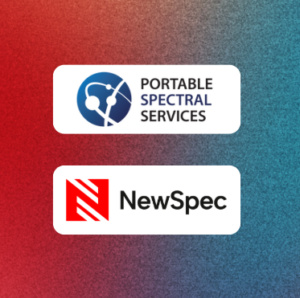
A Bright Future Ahead
Portable Spectral Services Announces Exciting Management Transition
Research and Development is an important part of the Portable Spectral Services ethos, and our Spectral Geologist, Dr Naomi Potter, has recently commenced a research project with Prof. Marco Fiorentini at the University of Western Australia. The project aims to improve the understanding of geochemical processes that occur in the regolith overlying nickel sulphide (NiS) deposits. Many mineral deposits have small footprints. A major challenge in exploration discovery is the increasing depth of cover over the largely unexplored areas of Australia. So, by understanding the processes that occur within the regolith, this could then potentially enable the expansion of these footprints and provide a greater opportunity to discover deposits under deep cover.
Significant knowledge has been gained in recent years on the processes involved in magmatic NiS mineralization and the goal of this research is to use what we know about these processes to understand secondary processes that are occurring in the regolith. For this project, the regolith profile at the Mount Keith NiS deposit (MKD5) (Fig. 1) will be examined at a micron scale enabling us to gain a detailed, contextual, and thorough insight into the geochemical processes that have taken place in the regolith profile.

Figure 1: Agnew-Wiluna Greenstone Belt hosts the Mt Keith Mine. Gole et al.,

Figure 2: Regolith profile of the Mt Keith Deposit (Brand PhD, refer to the PSS Hire Brochure 2020)
Historically, the most effective and successful method in detecting NiS mineralisation in the Yilgarn Craton has been through gossan identification and soil geochemistry. As future exploration focuses on concealed regions, drilling has become more important in the discovery of these deposits. Therefore, regolith geochemistry and mineralogy are likely to play an increasingly important role in identifying exploration targets and distinguishing NiS-bearing from barren ultramafic sequences.
Thirteen rocks samples were selected to cover the extent of the regolith profile, including in-situ and residual regolith zones as well as the mineralised mesocumulates, above MKD5 (Fig. 2). These samples will be analysed using the Bruker M4 TORNADO operated by Portable Spectral Services. Each sample will be scanned at a high resolution (<40 um step size) to investigate the micro-morphology and geochemical signatures of the regolith profile. These datasets will be processed using AMICS mineralogy software to identify the mineralogy and mineral alteration occurring in the samples (Fig. 3). A custom nickel calibration will be created for the M4 TORNADO and applied to the datasets to quantify the chemical composition of the samples and investigate the chemical variability occurring on a micro- and macro-scale across the regolith profile.
This project will demonstrate how the application of micro-XRF technology can provide a rapid and non-destructive technique to acquire qualitative and quantitative data at high spatial resolution (i.e. µm scale). To date this technology has yet to be utilised to its full potential in the exploration, mining, and metallurgical industries. The non-destructive nature of the instrument combined with minimal required sample preparation is a major advantage over other commonly utilised geochemical characterisation techniques. This makes µXRF ideally suited for rapid and inexpensive studies. The geochemical processes occurring above concealed deposits has an impact on exploration efforts in the cover. The identification of a rapid and accessible technology that can assist with identifying these indicator mineralogical and geochemical processes is vital for ongoing exploration.
The micro-scale chemical and mineralogical information gained from the micro-XRF will shed light on the transition of minerals and chemistry from fresh-rock through the regolith zones. The chemical and mineralogical trends identified at the micro-scale can then be extrapolated to provide new insights on the weathering and alteration signatures of concealed deposits when exploring undercover.
Figure 3: (a) Geochemistry and (b) mineralogy of a saprock sample from the regolith at Mt Keith. The mineralogy map highlights the carbonate and Fe-oxide veins and location of stitchtite and disseminated pentlandite through the sample.

For more information on micro-XRF spectroscopy visit www.microxrf.com.au/. Learn more information on the Bruker M4 TORNADO micro-XRF.
If you are interested in having your own sample analysed by micro-XRF, contact Portable Spectral Services at [email protected]
Brand, N.W., 1997. Chemical and mineralogical characteristics of weathered komatiitic rocks, Yilgarn Craton, Western Australia: Discrimination of nickel sulphide bearing and barren komatiites. Ph.D. Thesis, University of Western Australia, 373 pp.
Gole et al., 2019. A revised stratigraphic model for the 2.7 Ga Agnew-Wiluna greenstone belt, Yilgarn Craton, Western Australia. Ore and Energy Resource Geology: 1

Portable Spectral Services Announces Exciting Management Transition
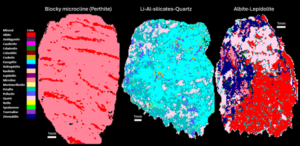
Our tool introduces uXRF (micro-X-ray fluorescence) scanning technology to RC chip analysis, enabling rapid, non-destructive, and quantitative analysis of major, minor, and trace mineral phases.
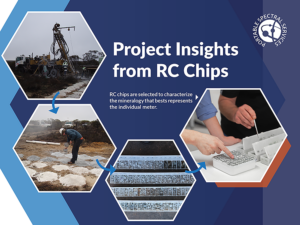
Automated micro-X-ray fluorescence (micro XRF) technology emerges as a powerful tool to rapidly and accurately capture the mineralogy of rock chip, RC and AC samples.

Findings of an ongoing regional evaluation study over concealed Proterozoic lithologies known to host magmatic nickel sulphides with potential to host other base-metal, gold and rare earth elements (“REE”) systems within the Fraser Range, Western Australia.
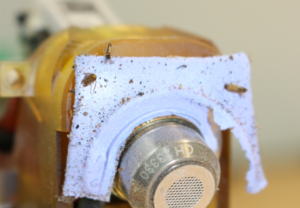
Findings of an ongoing regional evaluation study over concealed Proterozoic lithologies known to host magmatic nickel sulphides with potential to host other base-metal, gold and rare earth elements (“REE”) systems within the Fraser Range, Western Australia.
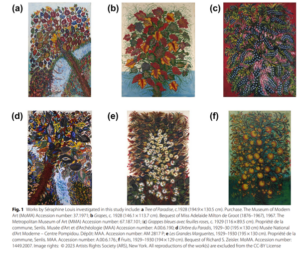
Findings of an ongoing regional evaluation study over concealed Proterozoic lithologies known to host magmatic nickel sulphides with potential to host other base-metal, gold and rare earth elements (“REE”) systems within the Fraser Range, Western Australia.
